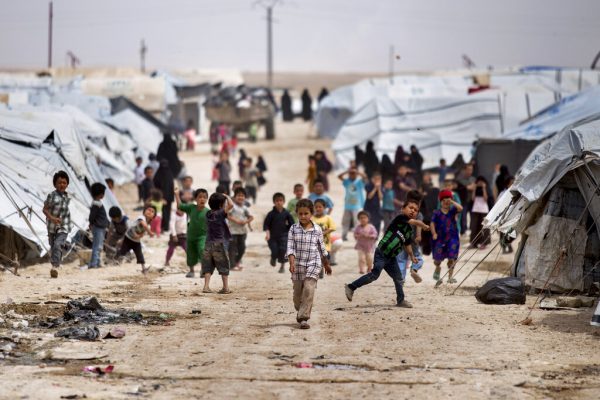The Challenges of Repatriating Malaysian IS Fighters from Syria
At the height of its power, the Islamic State (IS) group drew more than 40,000 individuals to Iraq and Syria from various parts of the world, including Europe, Africa, America, Central Asia, and Southeast Asia. Out of these, the Malaysian government estimates that 122 Malaysians traveled to Syria and Iraq to join the group. Some estimates have even suggested a higher number of 200-250.
After the fall of the last IS stronghold of Baghouz in eastern Syria in March 2019, many IS fighters and their families, including Malaysians, ended up in detention camps run by Kurdish forces, such as Roj and al-Hol in northeastern Syria.
While most of the Malaysian fighters have been killed and a small number repatriated, 56 Malaysians are currently still known to be in Syria. Among them are 19 men, 12 women, 17 male children and eight female children. Recent reports have suggested that 10 Malaysian women, 12 boys, and five girls are being held at the al-Hol camp while nine Malaysian men are still being held in a prison in al-Hasakah. One is detained at a prison in Idlib in northwestern Syria.
The presence of former Malaysian IS members and their families in volatile settings such as al-Hol poses several security risks to the region. While the Malaysian government has maintained an open-door policy with regards to the repatriation of its citizens, this process involves several issues and challenges.
Diplomat Brief Weekly Newsletter N Get briefed on the story of the week, and developing stories to watch across the Asia-Pacific. Get the Newsletter
Al-Hol: A Hotbed of Radicalization
Enjoying this article? Click here to subscribe for full access. Just $5 a month.
Al-Hol is located in al-Hasakah province in northeastern Syria and was originally built as a refugee camp in the early 1990s for people fleeing the Gulf War. The camp was reactivated during the rise of IS in 2014 and received a large influx of people after the fall of IS in 2019. The camp currently holds more than 60,000 people, most of whom are women and children. This number includes close to 10,000 foreigners.
Once described as one of the “deadliest places on earth,” the camp is known to be a hotbed of radicalization and has an active presence of IS sleeper cells. A recent United Nations report noted that “radicalization, fundraising, training, and incitement of external operations” were all taking place at al-Hol. Maj. Gen. Kevin Copsey, former deputy commander of the U.S.-led Coalition to Defeat ISIS warned that radicalization in the camps has the potential to sow the seeds of a new form of IS.
The radicalization of children within the camps is another major problem. Many of the women in the camps still hold steadfast to IS ideology and this has spilled over to the children, who have the potential to be groomed into the next generation of IS fighters.
Apart from dire humanitarian conditions, such as the lack of food, access to healthcare, proper sanitation, and proper education, violence is rampant within the camps, including assassinations, arson attacks, and stabbings. Some of these attacks are perpetrated by IS sleeper cells.
Last month, two gunmen belonging to an IS sleeper cell assassinated an aid worker with the Kurdish Red Crescent in al-Hol, highlighting the presence of the group’s activity within the camp. Since the beginning of 2021, more than 91 murders have taken place within al-Hol. There have also been reports of IS carrying out assassinations of Kurdish officials within the camp. In March of last year, Kurdish forces carried out a large scale operation to weed out IS members from al-Hol.
Some of the violence has been perpetrated by the Hisba, a self-styled IS moral police unit formed by staunch adherents of the group’s ideology. The unit is composed mostly of women who punish those who disobey them and provide information to the Kurdish forces. The methods of punishment include killing, beating, arson, and stabbing. In July 2019, an Indonesian woman who was pregnant was reportedly tortured and beaten to death in al-Hol.
On the other hand, various IS media platforms have alleged the abuse and violence against women and children by the Kurdish forces in charge of the camps. These include strip searching, separation of the children from their mothers, beatings, and tent searches at night. Some of these claims have been used to garner continued support for IS.
The Challenges Facing Malaysia
Unlike several other countries, which have refused to repatriate their citizens and have stripped them of their citizenship, Malaysia has actively engaged in efforts to bring its citizens home. Since 2019, the government has attempted to bring back some 40 Malaysians. Out of the reported confirmed to have traveled to Syria, 16 have now been successfully repatriated. However, the number has decreased since 2019, and this is due to several challenges in the repatriation process.
Among the most serious is the unwillingness of individuals themselves to return to the country. Those who have been successfully repatriated had expressed a willingness to cooperate with the Malaysian authorities and thus made the process much easier. However, a number have not expressed a willingness to come back, despite an open call by the authorities, for fear of having to undergo detention and rehabilitation. Some have moved on to other theaters of conflict, such as Afghanistan. As the exact number, identity, and location of all the Malaysians in Syria is unknown, in cases where they do not bring themselves forward it is almost impossible for the authorities to identify and repatriate them.
Enjoying this article? Click here to subscribe for full access. Just $5 a month.
Second, the Malaysian government faces a number of diplomatic challenges. The al-Hol camp is controlled by the Syrian Democratic Forces (SDF), a U.S.-backed coalition of Kurdish and Arab fighters that was founded in 2015 and has played a key role in fighting IS. However, the Malaysian government does not recognize the SDF diplomatically. As repatriation is not a straightforward, one-way process, and relies on the efforts and cooperation of numerous parties, the political status of the SDF has posed a diplomatic hurdle in a few instances.
The third challenge is the issue of finances. Indonesian authorities have noted that it costs around $3000 to repatriate a single person from Syria, something that may pose a considerable challenge to the repatriation process. While Malaysian authorities have not cited any issues relating to this, financial costs involved in the process may inadvertently pose challenges.
Last month, a band of IS members attacked the Gweiran prison in al-Hasakah province in an attempt to free its members who were held there. This has added further complexity to the question of the Malaysians in Syria. The nine Malaysians who are held in the al-Hasakah region are believed to have been in the prison at the time of the attack. There has been no news on the status of the Malaysians in the aftermath of the prison incident. According to IS propaganda, the objective of the attack was to free the hundreds of IS captives currently being held there. According to media reports, 374 IS fighters are known to have died in the incident, while another 400 are missing.
Outlook
Despite the challenges, Malaysia and other countries must continue with efforts to repatriate their citizens. As noted above, al-Hol remains a crucible of jihadi radicalization. If governments do not take the necessary action and neglect the detainees in the camp, there is a high chance that the camp and other similar detention facilities like Roj may be a point of resurgence for IS. The radicalization of children is a point of great concern that is likely to have security implications.
Malaysia has the legal and technical capabilities to deal with the returnees. The country’s legal arsenal comprises the Security Offences (Special Measures) Act 2012, the Prevention of Terrorism Act (POTA) 2015, and the Special Measures Against Terrorism Act (SMATA) 2015. These collectively provide the legal basis for individuals to be prosecuted or detained, even if their acts of terrorism were committed in a foreign country.
Upon return, all Malaysians, including women and children, will be subject to ideological, psychological, and security evaluations to determine the level of their involvement with IS and their degree of radicalization. If sufficient evidence exists, they may be charged in court. If not, they will undergo a month-long rehabilitation and reintegration program, after which they will continue to be monitored closely. The challenge is how to assess the levels of radicalization of children, as recent IS propaganda has showcased that the group is very much interested in grooming children to become its next generation of fighters.
The continued exposure of Malaysians to other extremists within the camps puts them in danger of further radicalization and the potential of networks being formed with other extremists, for example, those from Indonesia. Indonesian authorities have reported that there are close to 689 former Indonesian IS members in northeast Syria, Turkey and Afghanistan, and the Malaysians are known to have had a close relationship with them due to similarities in language and culture. IS still has its focus on Southeast Asia and this is evident through its Indonesian media affiliate An-Najiyah. This media outlet recently published propaganda material on the Gweiran jailbreak. Despite the reported death of IS leader Abu Ibrahim al-Quraishi this month, there has been no pause in the IS activities in cyberspace, and An-Najiyah is an example of how the organization is pursuing global ideological alignment through its affiliated media outlets.
The biggest threat, if these individuals are not repatriated to Malaysia through formal channels, is that they might re-enter the region illegally and with false identification, without the knowledge of the security services. With their entry comes the importation of radical ideology, international terrorist networks, battlefield experience, and knowledge in an array of militant capabilities such as guerrilla warfare, the use of firearms, and the making of bombs, which may be used in terrorist attacks in and around the region. As a result, it behooves Malaysia and other Southeast Asian governments to study the evolving situation in former IS strongholds closely.











